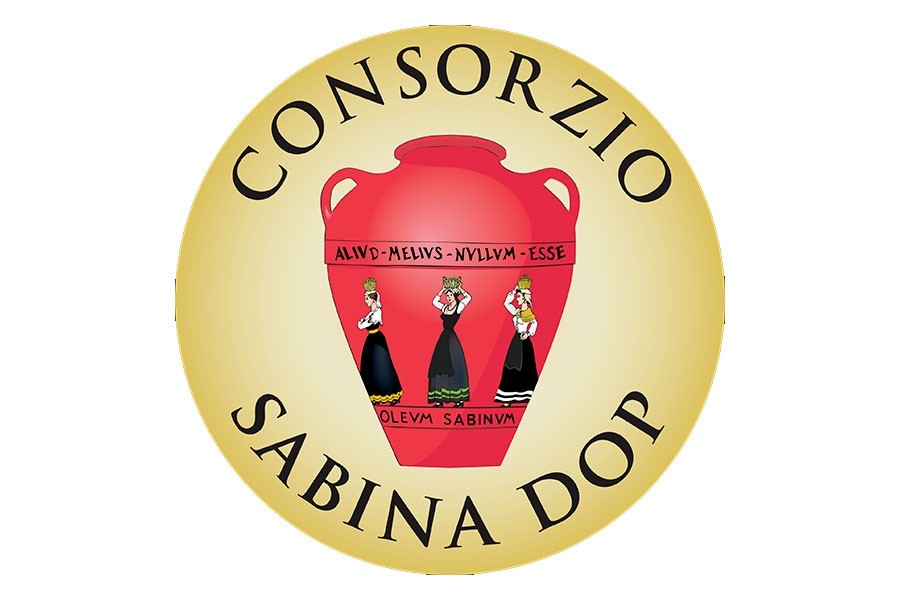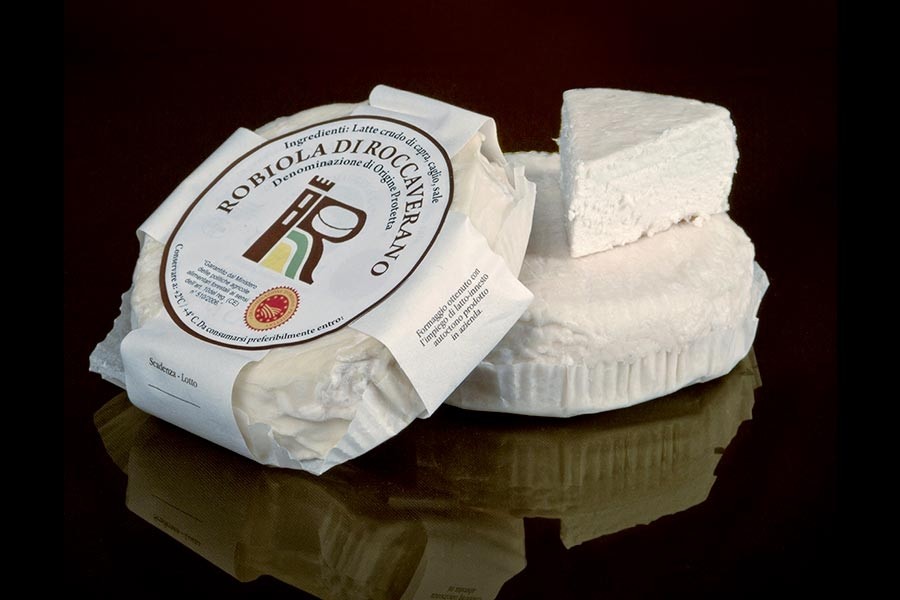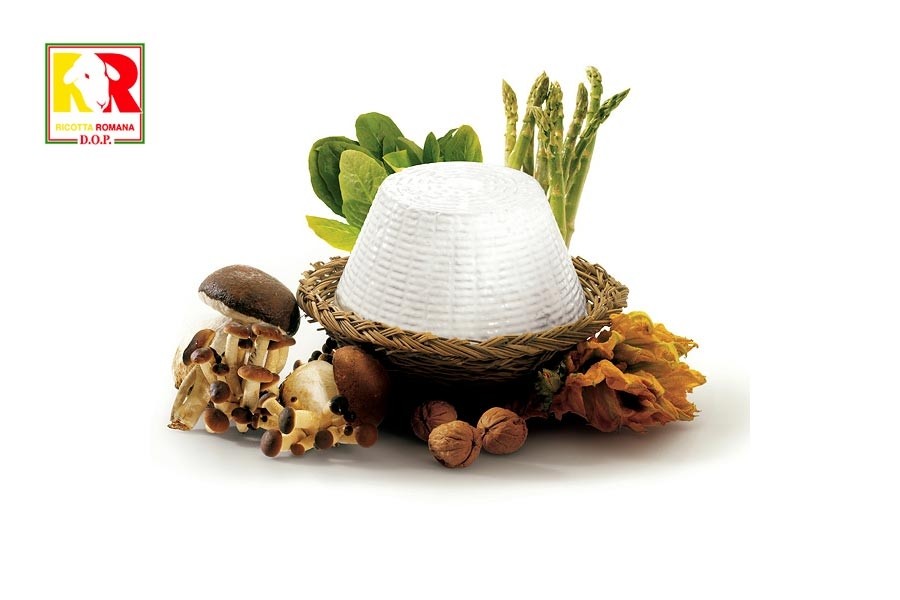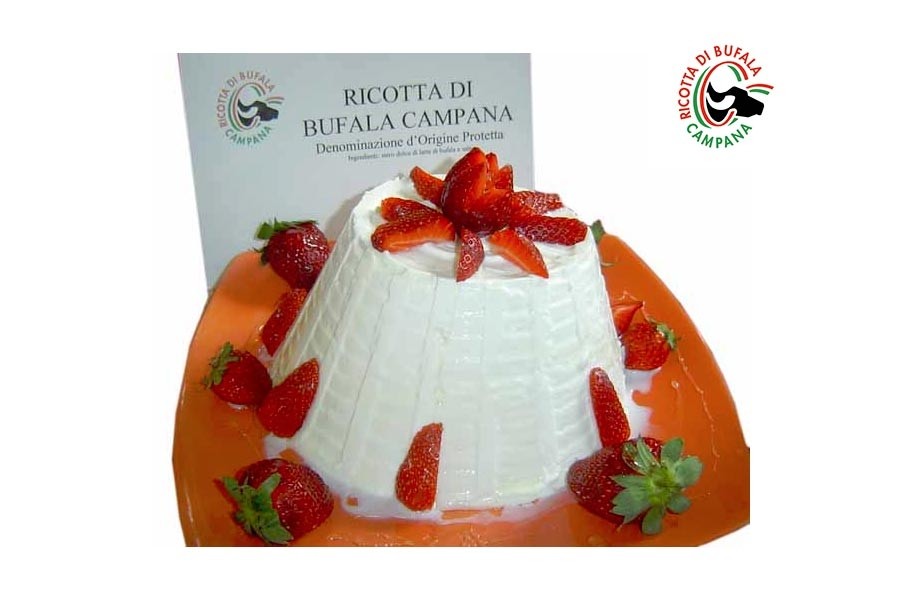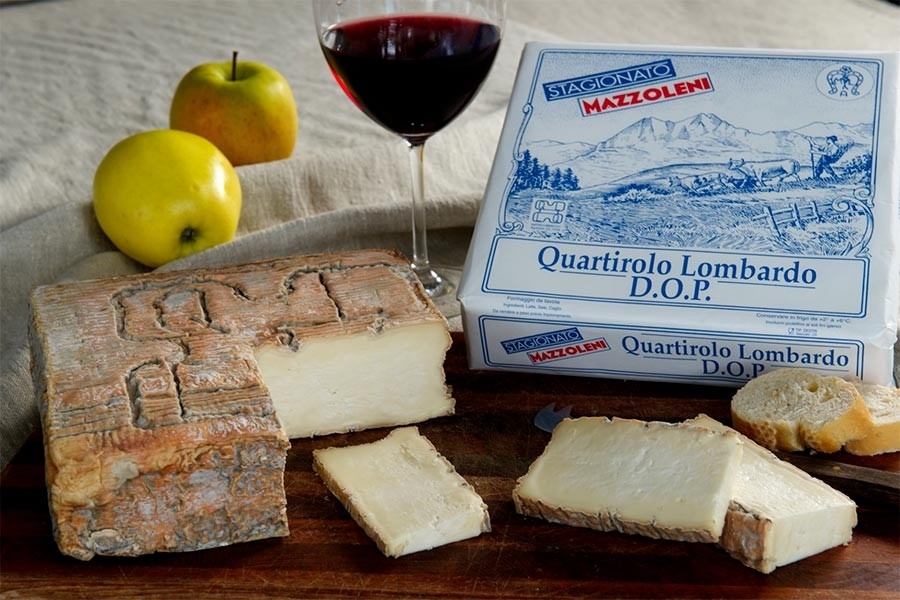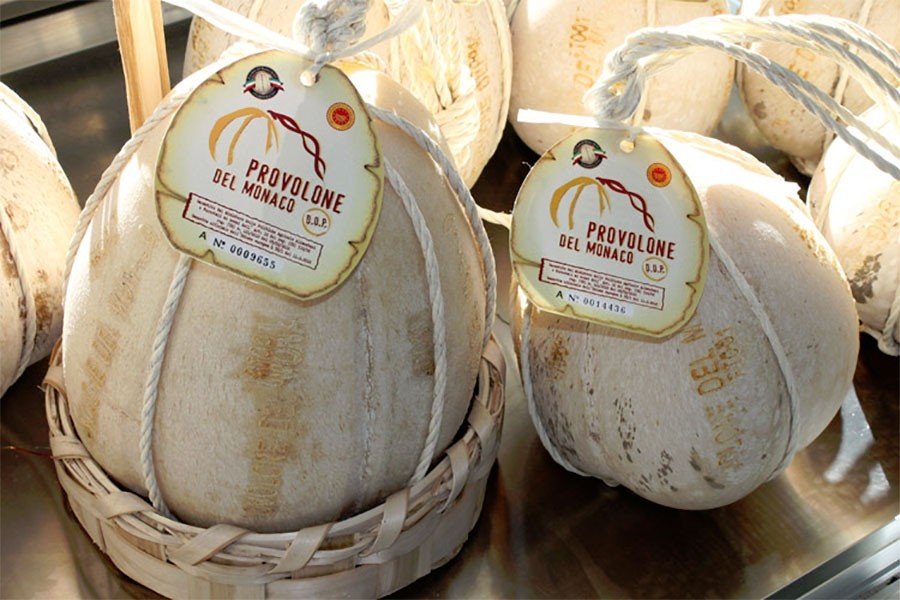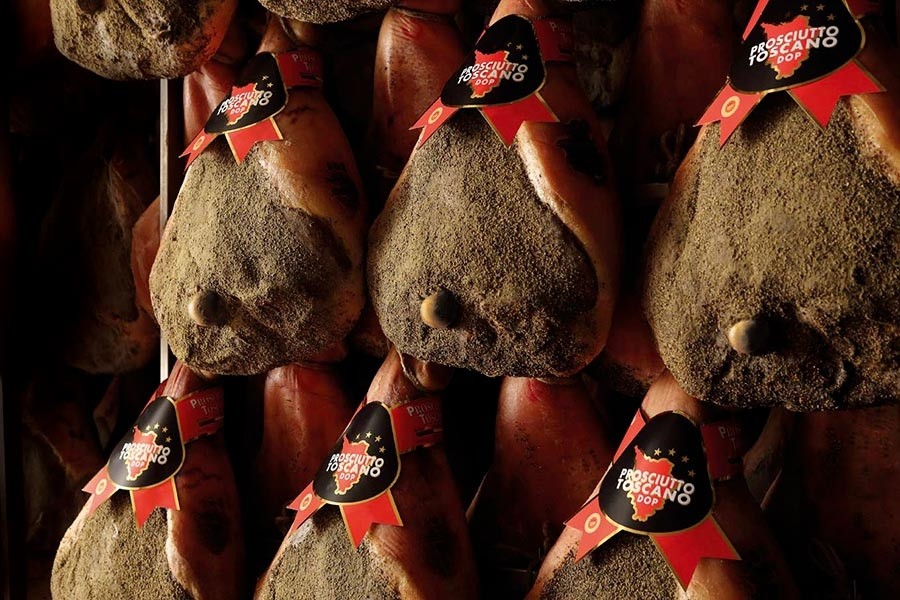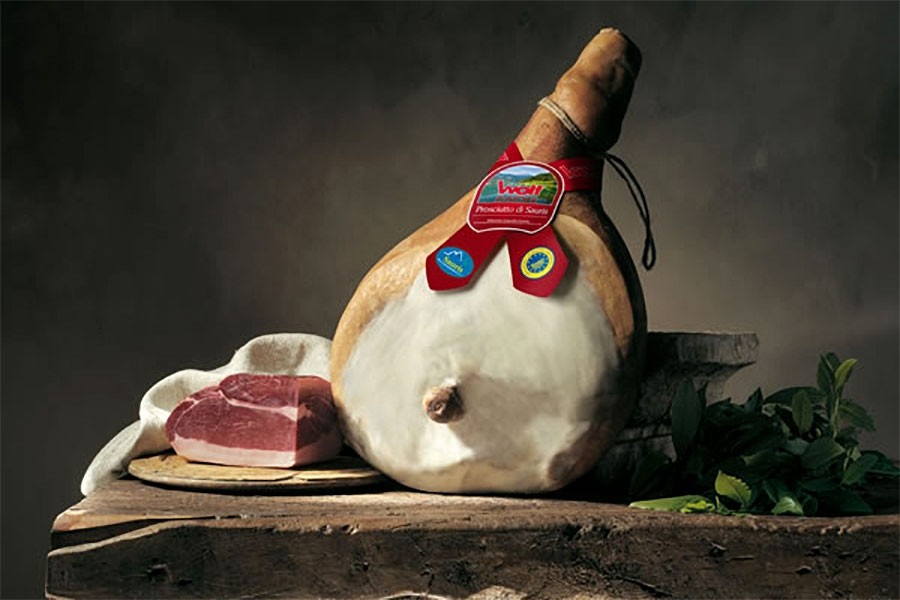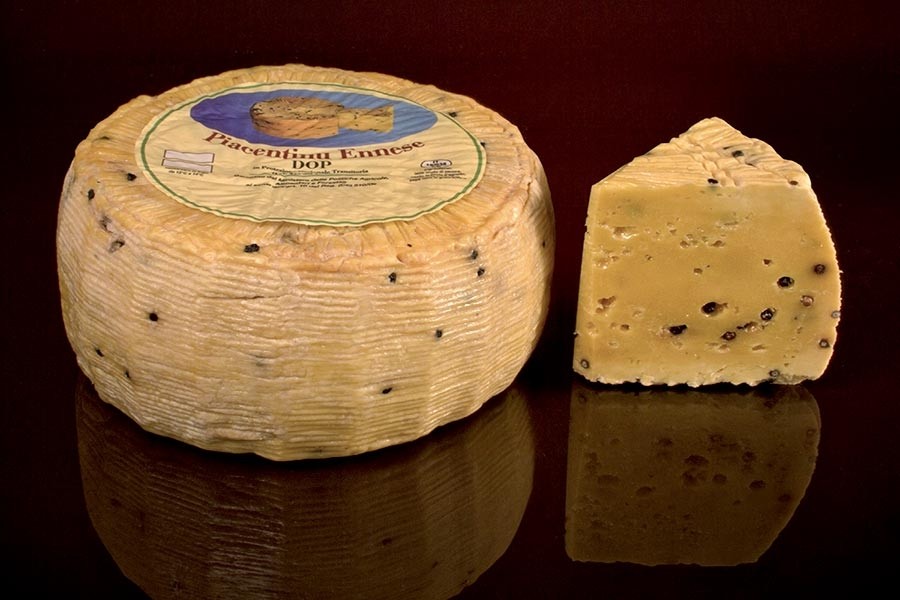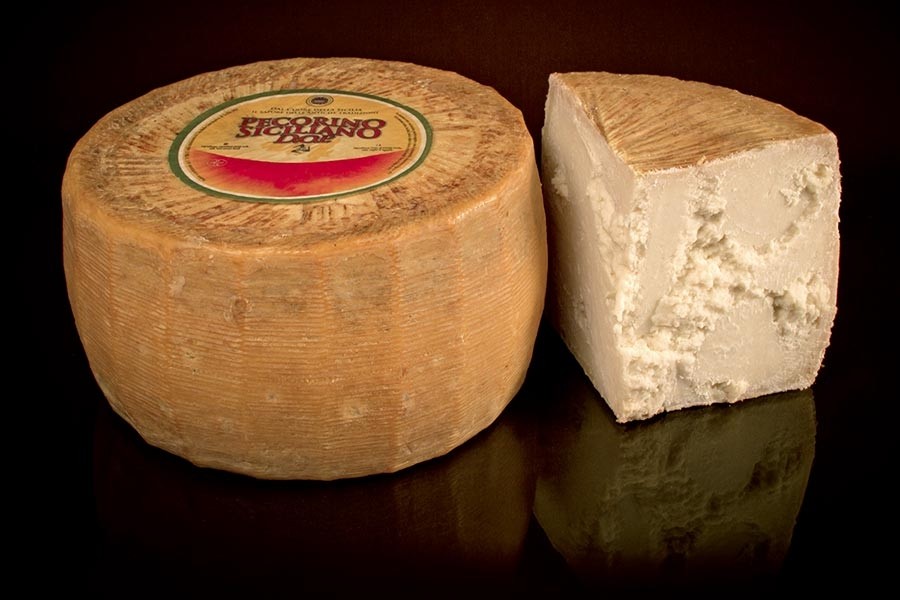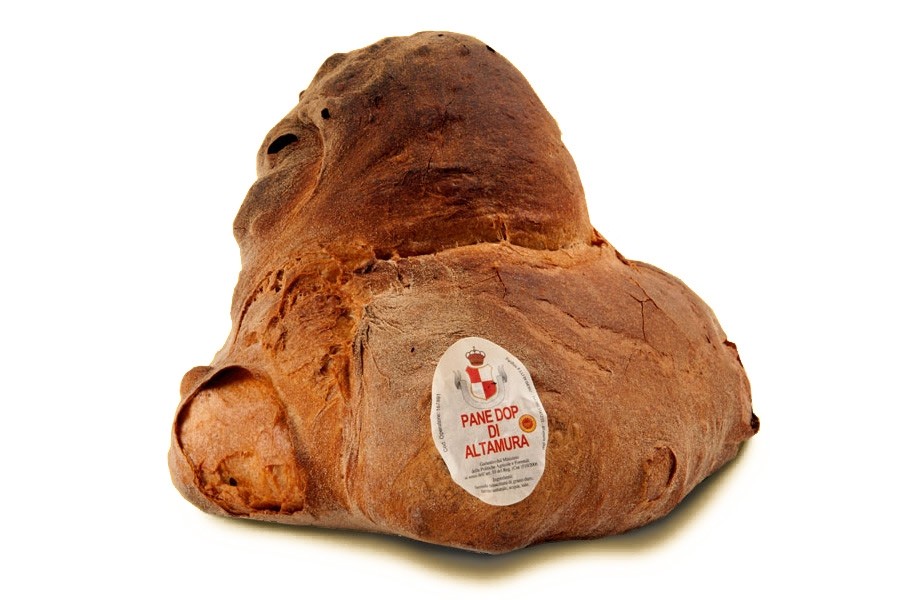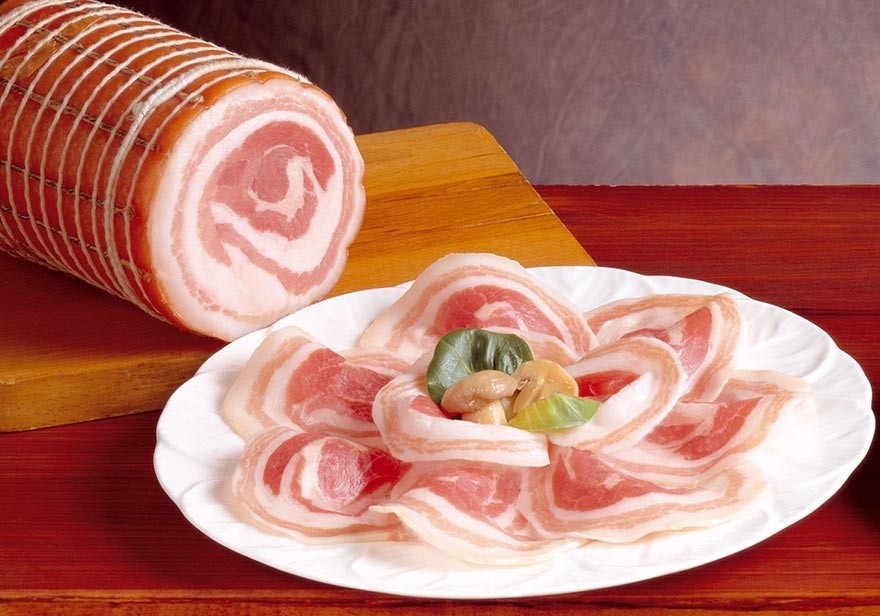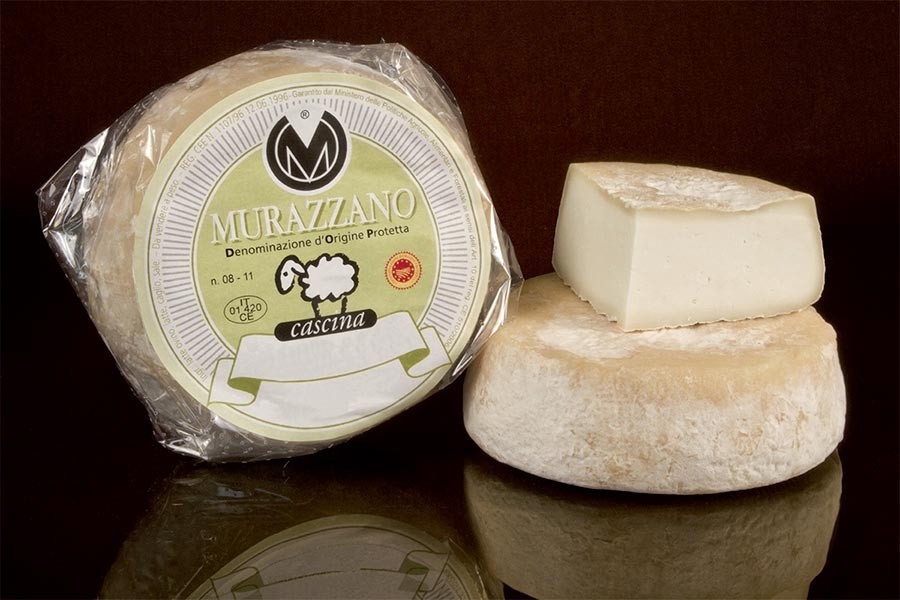Product description
Ricciarelli di Siena PGI are a sweet oven-baked confectionery product obtained through the processing of an oven-baked dough produced with carefully selected sweet and bitter almonds, sugar and egg white.
Production Method
The dough is made with chopped sweet almonds, refined sugar, icing sugar, hen egg albumen and leavening agents. Other specific ingredients, used as a partial substitution or in addition to the basic ones, are permitted: bitter almonds, glucose syrup or invert sugar, Millefiori honey, aromas, vanilla pods or extract, citrus essential oils, almond essence, finely cut candied orange peel, starch (as a base) and sorbic acid. The addition of any other ingredients, additives colouring or preservatives is not allowed. The almonds used for the dough are identified through the determination of their DNA. The dough is subdivided mechanically or manually into portions, giving the product its characteristic lozenge oval shape, after which they are sprinkled abundantly with icing sugar and placed carefully on starch wafer paper, which remains until the product is made available for consumption. Baking takes place in preheated ovens at a temperature of between 150-200°C for 12-20 minutes. The product is then left to cool and packaged.
Appearance and Flavour
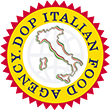
 IT
IT 